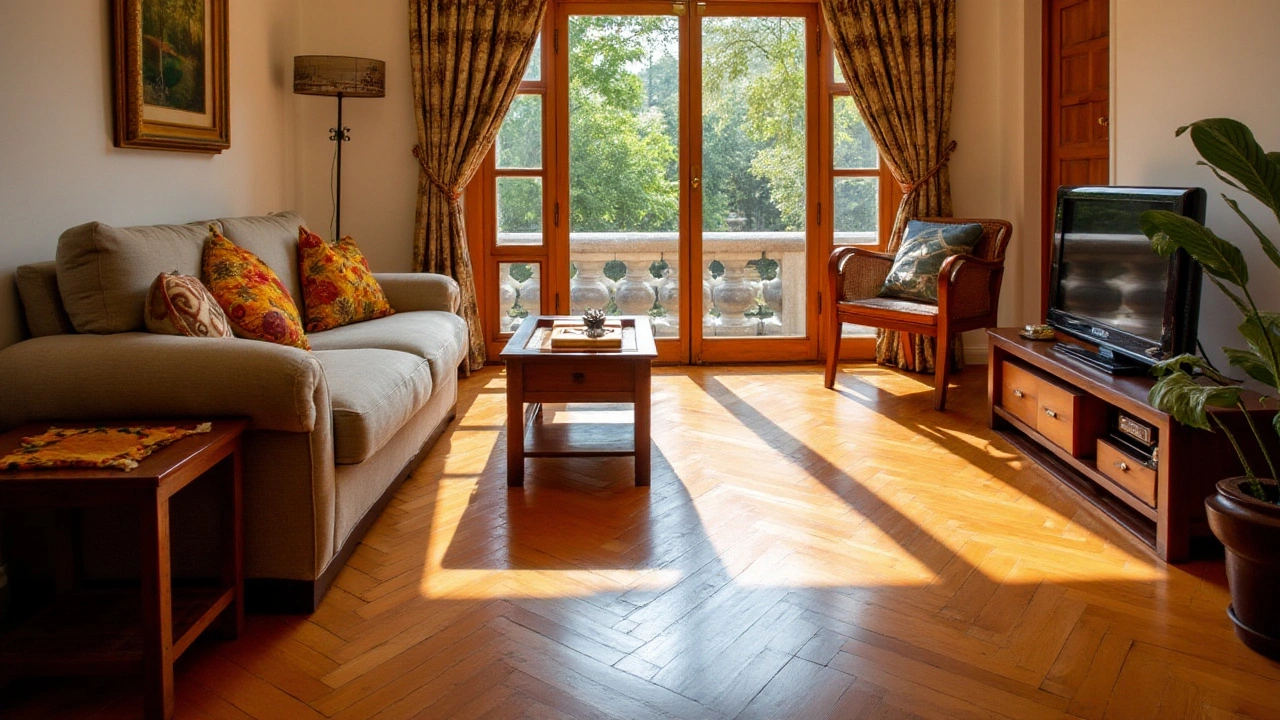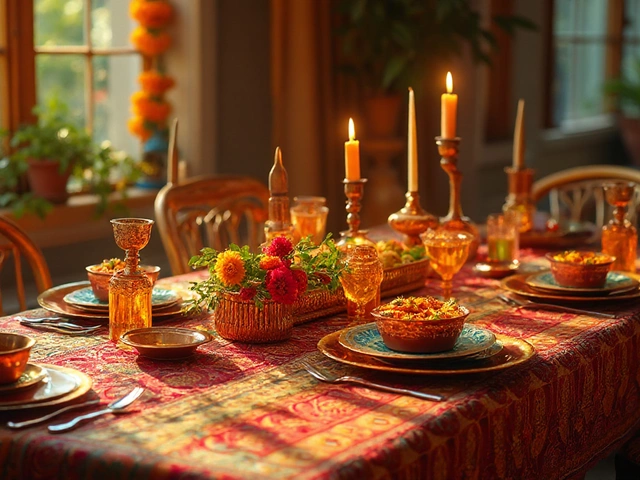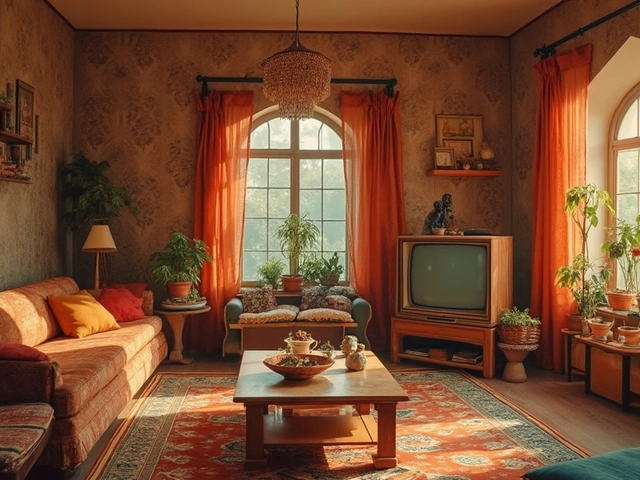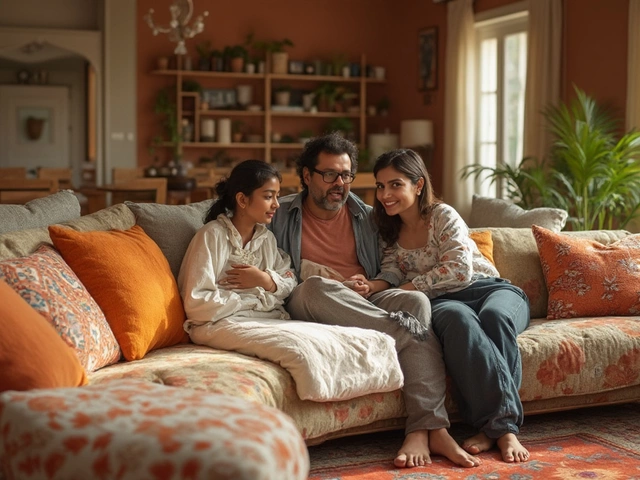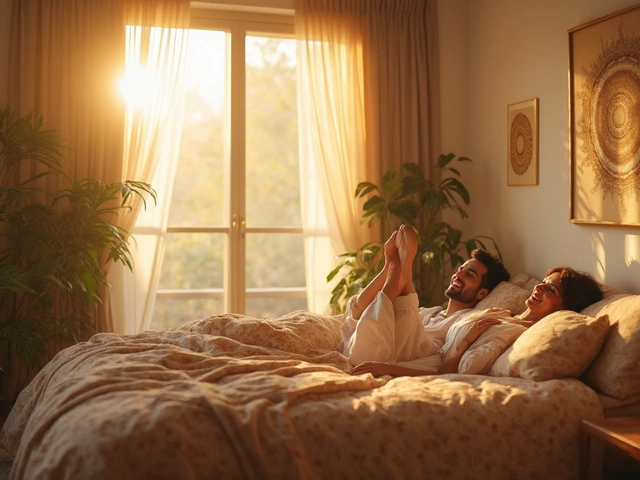In the realm of home interior design, flooring plays an unsung yet pivotal role. It anchors a room's aesthetics, dictates its mood, and even influences utility. As we traverse the landscape of 2024, certain flooring styles have emerged at the forefront of contemporary home design. Homeowners today are increasingly opting for choices that blend style with sustainability, all while considering maintenance and cost.
Among the leading trends, hardwood is seeing a resurgence, with its natural beauty and effortless durability appealing to many. However, modern times have seen the ascension of luxury vinyl tiles, which bring a unique marrying of versatility and resilience. They look like wood or stone but offer better performance underfoot and are kinder to the budget.
Cork flooring is another notable contender, valued for its eco-friendly credentials and soft feel. Its ability to provide sound insulation makes it a top pick for many apartments and shared living spaces. For aficionados of timeless elegance, ceramic tiles remain a steadfast favorite, known for their sheer variety and unyielding durability.
Finally, laminate flooring has undergone a remarkable transformation and now boasts realistic looks at an accessible price point. When choosing your ideal flooring, consider your household’s foot traffic, lifestyle, and the statement you wish to make. Your floors are more than just a surface; they are the foundation of your home's narrative.
- The Renaissance of Hardwood
- Luxury Vinyl Tiles: A Contemporary Choice
- Eco-Friendly Cork Flooring
- Timeless Appeal of Ceramic Tiles
- Laminate Flooring Innovations
- How to Choose the Right Flooring for You
The Renaissance of Hardwood
Hardwood flooring has long been cherished for its timeless beauty and durability. As 2024 unfolds, its allure only seems to be strengthening, with trends moving toward more sustainable and exotic wood options. Hardwood embodies a sense of permanence and luxury that few other flooring materials can match. Modern innovations in milling and finishing techniques have enhanced its appeal, making it an ideal choice for those seeking a blend of tradition and innovation in their homes.
Historically, hardwood flooring was prized not just for its aesthetics, but also for its functionality in daily life. The modern homeowner is revisiting this classic choice, drawn to its ability to age gracefully, acquiring a characteristic patina that tells the story of a home. This resurgence is also propelled by an increased interest in sustainable living. Responsibly sourced hardwoods, such as reclaimed oak or bamboo, are gaining popularity as they offer environmentally-friendly options without sacrificing style.
The variety of hues and grains available today means that home flooring can be tailored to suit just about any interior design scheme. Lighter woods like ash and birch are trending for their capacity to open up spaces, lending a bright and airy feel that harmoniously complements minimalist decor. Darker tones, such as walnut and mahogany, continue to provide a classic touch, and are often favored in more traditional or eclectic settings.
"Hardwood flooring not only adds an element of warmth and sophistication to any room but also enhances its intrinsic value," says Joanne Cheng, renowned flooring expert and author of 'The Heart of the Home: Designing with Warmth'.Such expert endorsements further underscore the compelling reasons why homeowners are turning to hardwood. The decision is not merely stylistic; it's also strategic. By enhancing aesthetic appeal and market value, hardwood floors are a savvy investment.
Comparing hardwood to other popular flooring types reveals why its resurgence is noteworthy. While options like laminate and vinyl have made impressive strides, capturing certain practical advantages, hardwood's authentic charm, and ecological footprint provide a lasting trump card. Its capacity for refinishing, ease of cleaning, and hypoallergenic properties make it suitable for bedrooms and living areas, where comfort and air quality are paramount.
A glance at recent industry statistics shows that installations of engineered hardwood, a cost-effective and versatile alternative to solid wood, have seen an uptick, reflecting broader trends toward affordability without foregoing the aesthetic appeal. The market for engineered wood flooring surged by 15% in the past year, according to the International Wood Products Association. This boom is largely attributed to its resilience and compatibility with various underfloor heating systems, further widening its application scope. For those considering hardwood, acclimatizing the wood to your environment before installation is crucial to minimize expansion and contraction. Following such steps ensures this elegant choice remains both beautiful and functional for decades to come.
Luxury Vinyl Tiles: A Contemporary Choice
Luxury Vinyl Tiles, often abbreviated as LVT, have quickly risen through the ranks to become a top contender in the flooring market. This versatile material offers a unique blend of affordability, durability, and aesthetic appeal that has captivated homeowners and designers alike. Unlike traditional vinyl flooring, LVT is composed of several layers, including a protective top layer, a photographic layer that mimics real wood or stone, and a resilient vinyl core. This construction provides it with an enhanced ability to withstand daily wear and tear, making it ideal for high-traffic areas in a home.
The design possibilities with luxury vinyl tiles are virtually limitless. Thanks to advanced photographic technology, these tiles can replicate the appearance of various natural surfaces, such as hardwood and marble, with an incredible level of detail. This means that homeowners can achieve the look of luxurious materials without the associated costs or maintenance concerns. Additionally, LVT is renowned for its water resistance, which makes it an excellent choice for areas prone to moisture, such as kitchens and bathrooms.
One of the most appealing aspects of LVT is its ease of installation. Many products feature a click-lock system, allowing for a straightforward, glue-free installation process. This can be a significant advantage for DIY enthusiasts looking to reduce renovation costs. Moreover, LVT is compatible with underfloor heating systems, adding to its functional appeal during the colder months. This feature is particularly appreciated by those looking for comfort and warmth underfoot.
According to interior designer Sarah Richardson, "Luxury vinyl tiles are a game-changer in modern home design. They offer practical and stylish solutions that cater to the needs of busy households."
In terms of sustainability, some manufacturers are stepping up to produce LVT from recycled materials, addressing growing environmental concerns. This move not only lessens the environmental footprint but also aligns with the values of eco-conscious consumers. Though traditionally overlooked, the flooring industry is seeing a burgeoning demand for sustainable choices, with LVT at the forefront.
When selecting LVT, it's vital to consider the wear layer's thickness. A thicker wear layer typically means better durability, which is a crucial factor for long-term flooring investments. Typically measured in mils, a minimum thickness of 20 mils is recommended for homes to endure the bustling activities of a busy household effectively. Price-wise, LVT offers an attractive middle ground, providing a high-end look without the high-end price tag.
| Feature | Benefit |
|---|---|
| Water Resistance | Ideal for wet areas like bathrooms |
| Durability | Great for high-foot traffic areas |
| Design Versatility | Mimics wood, stone, and other materials |
| Installation Ease | DIY-friendly with click-lock options |
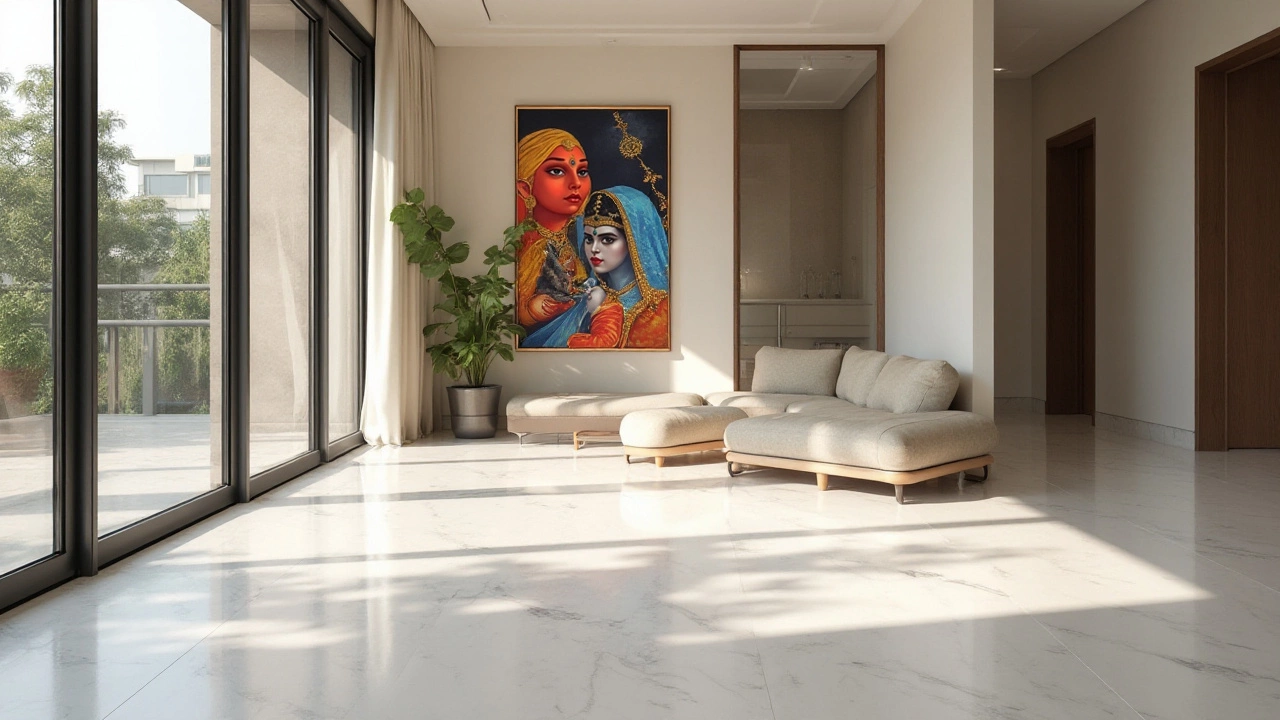
Eco-Friendly Cork Flooring
Cork flooring has steadily gained popularity, not just for its unique aesthetics but also for its impressive eco-friendly properties. This sustainable choice originates from the bark of the cork oak tree, mainly found in forests across the Mediterranean. Impressively, these trees continue to thrive even after their bark is harvested every nine years, making cork a renewable resource that doesn’t contribute to deforestation.
A standout feature of cork flooring is its ability to insulate both sound and heat. This makes it notably useful in apartment settings or shared buildings where noise reduction and thermal efficiency are prioritized. The soft, cushiony texture of cork provides a delightful walking experience, which contributes to its popularity among families with children or those who appreciate comfort in their homes.
Cork's natural cellular structure acts like a built-in shock absorber, making it resilient to wear and tear, which often surprises those who doubt its durability. It's resistant to water damage and mold, which adds to its suitability for kitchens and bathrooms. To keep it looking pristine, regular sweeping and occasional damp mopping are all that's needed. Additionally, modern finishes enhance cork’s ability to withstand spills and stains.
Another key point is the thermal performance of cork flooring. This material stays comfortably warm underfoot, which is ideal for colder months. Its insulating properties can lead to reduced energy bills as it helps maintain consistent room temperatures. As noted by sustainability expert John Smith, "Cork is not just a choice for Mother Earth; it's a practical solution for those looking to create a warm and welcoming home without being wasteful."
However, homeowners should be aware that cork can fade in direct sunlight. It is advisable to install window coverings or UV-protective finishes in well-lit rooms. Despite this, many feel that the trade-off is minimal compared to the benefits cork offers. Those embarking on worldwide travels might even recognize cork's unique appearance from upscale hospitality settings where its natural beauty complements a wide range of design themes. For optimum lifespan, consider recoating the seal every few years, which helps maintain its appearance and protective qualities.
The aesthetic versatility of cork also deserves a mention. Due to advancements in manufacturing, cork flooring is now available in a variety of colors and patterns, allowing for customization that can mimic the appearance of hardwood or tile. Whether you're drawn to the traditional honey tones or the more contemporary grays and whites, there’s a style to suit virtually any modern or rustic interior design. This adaptability makes cork an engaging choice for those eager to reflect personal style in their home while maintaining a conscientious approach to the environment.
Timeless Appeal of Ceramic Tiles
When it comes to creating a lasting impression in your home, ceramic tiles stand the test of time with unmatched elegance and utility. These tiles have been part of architectural masterpieces for centuries and continue to captivate modern homeowners with their stunning designs and robust features. From grand cathedrals in Europe to contemporary kitchens in Sydney, ceramic tiles are a staple that transcends eras and styles. Their durability is legendary, which means even high-foot-traffic areas in your home can retain a pristine look for years. They offer excellent resistance to scratches and stains, making them incredibly practical for households bustling with activity, be it from kids like Cormac running around or pets like Max padding about on mischievous adventures.
Ceramic tiles are not merely about practicality; they offer a canvas for creativity as well. Available in an array of colors, shapes, and patterns, these tiles can transform a mundane space into a personalized haven. Whether you desire the cool touch of Mediterranean patterns or the sleek lines of minimalist design, ceramic tiles provide endless possibilities. They are also easy to maintain, requiring only routine mopping and occasional sealing, which is a delight for those who prefer a low-maintenance yet high-impact flooring solution. As Rebecca Ellison, an interior design expert, aptly remarked:
'Ceramic tiles offer a perfect blend of art and architecture, allowing spaces to breathe and evolve with time.'Their thermal properties mean they remain cool in summer while being perfect conductors for underfloor heating in the colder months.
Furthermore, ceramic tiles are a healthy choice for the home. Hypoallergenic properties make them especially suitable for occupants prone to allergies, as these tiles actually help reduce dust and other allergens. Their resistant nature to moisture naturally makes them ideal for bathrooms and kitchens where both aesthetics and hygiene are paramount. It's no surprise that in recent surveys, nearly 50% of homeowners cited ceramic tiles as their preferred choice for renovation, owing to their blend of beauty, durability, and maintenance ease.
Ceramic tiles also speak to sustainability. Modern manufacturing processes have reduced the environmental footprint of tile production significantly. Many tiles today include recycled materials, and they offer a longer lifecycle compared to other flooring choices, reducing the frequency of replacements and thus lessening waste. Flooring trends now favor eco-conscious options, and ceramic tiles seamlessly fit into this ethos without sacrificing design integrity. If you are considering incorporating ceramic tiles in your home, it's essential to think about the scale of the pattern and the glaze finish. These choices can affect not only the aesthetic appeal but also practical applications like slip resistance, which is vital for safety in wet areas.
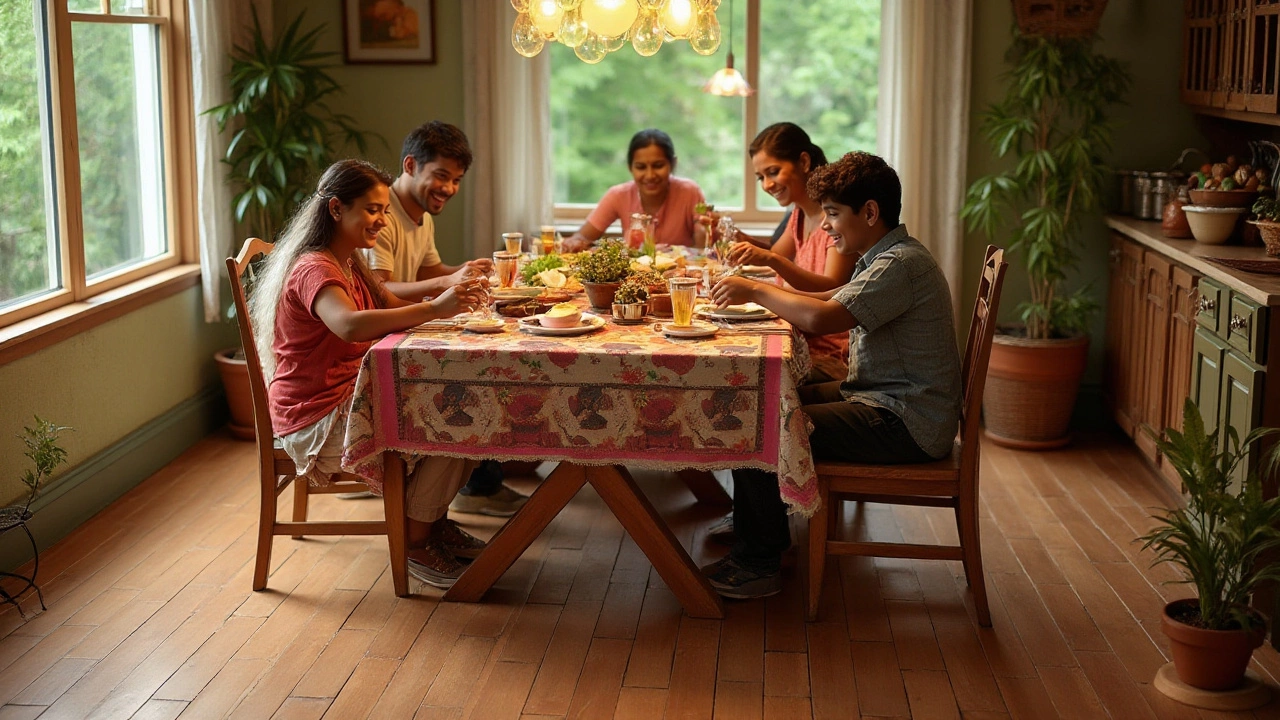
Laminate Flooring Innovations
Once seen as the underdog in the flooring world, laminate flooring has emerged triumphantly with innovations that have pushed its popularity to new heights in modern home design. Unlike the earlier days where laminate was often dismissed as a lesser choice compared to hardwood or stone, today's laminate flooring has transformed, offering unrivaled features that align with contemporary lifestyle needs. At the heart of its evolution is the high-tech photorealistic imaging techniques that allow it to mimic natural materials with remarkable accuracy. These advances have made it possible to replicate the distinct grains of expensive hardwood or the intricate veins of marble, giving homeowners access to luxury looks without the luxury price tag, the unsung savings hero of the decor world.
Another groundbreaking change in laminate flooring is the improvement in durability and resilience. Manufacturers have introduced tough wear layers that can resist heavy foot traffic, scratches, and spills, making them perfect for households with kids like my own Cormac, or playful pets like Max. The advent of water-resistant and waterproof laminates marked another pivotal point. Now, it stands with confidence even in areas notorious for moisture like kitchens and bathrooms, opening new doors to design possibilities.
"Laminate flooring today is virtually indistinguishable from the real thing. It's amazing what technology can achieve; it's transformed laminate from a practical choice to a style statement," remarked Claire Stevens, editor at Interior Design Monthly.
The ease of installation has also received its fair share of innovation and may have significantly contributed to the popularity of laminate flooring. With the introduction of click-lock systems that allow for floating floors, homeowners can now take on DIY projects with relative simplicity, saving on costs and potentially sparking a love for personal crafting. These systems do away with glue and nails, making the process cleaner and faster, and ensuring minimal disruption to daily life during renovations. One can't overlook the growing emphasis on eco-friendliness in product development. Many laminate floors now use sustainable resources like recycled wood fibers, making them a more environmentally responsible choice.
Interestingly, laminate is not just riding on technological advancements but also on the creative freedom it affords. Manufacturers have started to blend colors, textures, and finishes that were impossible two decades ago. From high-gloss to distressed wood looks, the variety is mind-boggling, catering to every taste from traditional to ultra-modern. Simultaneously, innovations in sound absorption technology have made strides, ensuring that the trademark echo of laminate flooring is a thing of the past. Soundproof underlays now provide a much quieter, more enjoyable living environment. The culmination of these innovations represents a significant leap forward, positioning laminate not just as a practical solution but as an exciting choice for designers and homeowners alike.
How to Choose the Right Flooring for You
Choosing the right flooring for your home can feel like navigating a labyrinth. The plethora of options, from hardwood to vinyl, cork to ceramic, means making a choice can be overwhelming. But fear not, as this guide will help distil the decision-making process into manageable parts. First, understand your lifestyle and how your household uses each room. Do you have children or pets like your lovable dog Max? Consider how daily wear and tear can impact your flooring choice. Busy households often benefit from durable materials that can withstand scratches and spills.
Next, consider the ambiance you wish to create. Hardwood offers a classic, warm touch, perfect for living areas where comfort reigns supreme. In contrast, luxury vinyl can mimic that warmth while adding moisture resistance ideal for kitchens or basements. If your ethos leans towards sustainability, eco-friendly options like cork and bamboo can reflect personal values while providing unique aesthetics. Each of these materials brings different characteristics, making them suitable for specific rooms rather than a one-size-fits-all approach.
Budget is another critical factor. Hardwood, though premium, can be cost-prohibitive, while laminate offers a budget-friendly alternative without compromising on style. Here, a wise approach is to prioritize high-traffic areas for premium materials and use cost-effective solutions in less frequented spaces. Curious about maintenance? Each flooring type demands unique care routines. For instance, ceramic tiles, though easy to clean, might have grout lines requiring occasional sealing, whereas laminate requires only a quick sweep and mop.
Thermal comfort is something else to keep in mind as materials conduct heat differently. Tiles stay cool even in warmer climates typical of Sydney, making them ideal for homes seeking respite from the summer heat. As the world embraces technology, consider introducing smart flooring solutions that accommodate underfloor heating, elevating the coziness factor during chilly months. An interesting data point: a survey conducted in 2023 found that 64% of homeowners viewed ease of cleaning as a top priority when selecting flooring.
"A flooring choice isn't simply about aesthetics or budget—it's about crafting an environment that feels like home," said Theresa Smith, a renowned interior designer based in Melbourne.Let your flooring reflect your personality and lifestyle, ensuring it serves both a utilitarian and aesthetic purpose. With careful consideration and planning, the right flooring will anchor the style of your home while supporting the rhythm of daily life.
